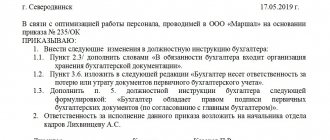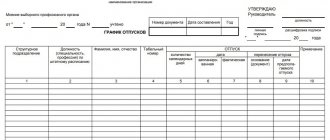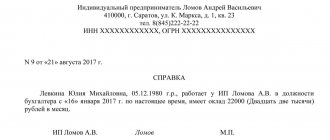Which orders and in which part of them can changes occur?
Almost any orders can be edited, with inaccuracies and violations, wittingly or unwittingly. These could be orders:
- relating to the working conditions of employees;
- some local documents (staffing schedule, vacation schedule, etc.);
- changes of officials;
- relations between employer and subordinates.
As for those parts of the order that can be subject to adjustments, they can also be anything: the basis, main part, conclusion can be edited.
Why make changes
Some employees of organizations neglect to make changes to existing orders, believing that they can do without them. However, this point of view is incorrect, since an order is a document that regulates legal relations in an organization in strict accordance with the law, and therefore has serious legal significance.
The order is mandatory, and if any of its clauses sounds incorrect or erroneous, in the event of disputes and disagreements, it will not be easy to prove the employer is right, which means that both the enterprise as a whole and its management can be brought to administrative liability.
The text describes the options for making changes.
Making changes means:
- replace - words, numbers in the title, text or appendices;
- delete - remove words, numbers, sentences from the title, text or appendices, invalidate (exclude) clauses, paragraphs, etc.;
- supplement - with words, numbers, sentences, the title, structural elements of the text (points, paragraphs, etc.) or applications.
In the ascertaining part, the rationale for the changes being made is provided, and references are made to legal acts, significant facts or events. For example, “in order to bring the local regulatory framework into compliance with current legislation...”. The administrative document begins with the words “Introduce to...”. For example, “Introduce the following changes to the HR Director’s order dated August 20, 2022 No. 65-UP “On approval of the Regulations on bonuses for employees of the sales department”:..”.
How to make changes: procedure
Changes to the order must be carried out according to a certain algorithm:
- A decision is made that these changes are really necessary and inevitable.
- A special order is issued, which fixes the need to make amendments to an existing document and includes a list of positions that are subject to adjustments.
- The order is signed by the head of the enterprise and responsible employees, and from the date indicated in it, the changes take effect.
What are the grounds for making changes?
In the event of a change in external or internal factors in the work of a business entity, as a result of which any part of the current order no longer corresponds to reality, the responsible person must draw up an official or memo addressed to his immediate superior or directly to the head of the company.
It must indicate the factor that had its impact, as well as the recommended action. For example, in connection with the dismissal of an employee or going on vacation (based on a vacation order), the responsibilities assigned to him must be transferred to another employee. Sometimes changes to an order are requested due to an error in the original document.
Attention! If changes are requested due to some events in the employee’s life (for example, the last name was changed due to marriage), then a copy of the supporting document must also be attached.
Further, when issuing an order to make changes, its text indicates the reason-justification that prompted its release (for example, in connection with a change of name by an employee), as well as the basis - details of the legislative act, memorandum, data on another document, etc. .
Who can be trusted to draw up such an order?
The formation of an order to amend the order can be entrusted to any employee of the enterprise who has the necessary powers and has an idea of how to write administrative documents. Most often, this is a person close to the management of the company: a legal adviser, a specialist in the personnel department, a secretary.
However, regardless of who directly draws up the document, he must submit the finished order to the director of the organization for signature - without his autograph, the order will not acquire legal status and can easily be challenged with the help of a labor inspectorate or court.
It should be said that the more carefully and attentively the employee involved in the formation of the order treats his job functions, the less likely it will be for the company’s management to find themselves under the close attention of regulatory authorities.
Standard samples of Change Orders
We have found that preparing an order to change another document is quite simple. However, in practice it turns out that it is not the form of the document that causes difficulties, but the wording of the reasons and amendments. The compilers do not know how to correctly indicate why the document is changing or cannot edit the paragraph. Let's look at some of the most common examples.
An order that will record a change in an employee’s salary can be issued using the following wording:
“In order to increase the motivation of sales department employees and bring their remuneration into line with modern market conditions, I order order No. 25 to state paragraph 3 in a new edition: “the salary of a sales department manager is 18 thousand rubles.”
If the act changes the work schedule, the sample could be like this:
“In order to optimize the production process, I order changes to act No. 3-r dated March 21, 2022... paragraph 1 is read in the new edition: “The enterprise establishes a 5-day work week, Monday to Friday, from 10:00 to 19:00 hours with a 45-minute lunch break, the time of which employees choose independently.”
Suppose a manager wants to make changes to the order approving the timing of a business trip.
“In order to approve the new work plan for the deputy head of the sales sector, I order in order No. 321-k dated February 29, 2018, in paragraph 3, the words “for 5 days” are replaced with “for 5 working days.”
The principle of presenting the amendments is simple: either specific words and expressions are changed, or a completely new wording is proposed. There are no strict rules; in each case you need to choose the optimal and convenient solution.
Download : Order to amend the Order (blank form)
Download: Order to amend the Order (filling sample)
How to correctly compose and execute an order
There is no unified, single form for an order to amend an order, so it can be drawn up in free form or, if the enterprise has a developed and approved document template, based on its sample.
At the same time, it should be borne in mind that the structure of the form must meet certain office work requirements, and the content must include some necessary information. The latter include:
- Company name;
- place, number, date of drawing up the order;
- rationale and basis for it.
The text must include a reference to the order to which adjustments are made using this order, as well as a complete list of changes (indicating the revision “before” and “after”).
Then the employees responsible for its implementation should be appointed.
Errors in personnel documents: we correct shortcomings without consequences
No one is perfect, and HR officers in their daily work make all sorts of mistakes when preparing documents. Despite the fact that there are algorithms for making corrections to personnel documents (orders, instructions, work books, contracts, etc.), today this topic remains relevant, especially since incorrectly executed personnel documents can be declared invalid. In addition, the employer cannot avoid legal costs if the employee makes claims and goes to court in connection with such documents.
IF AN ERROR IS FOUND IN THE PERSONNEL ORDER
Of course, errors in orders should be corrected at the project stage. But if this was not done in a timely manner, then a new order can be issued to cancel the erroneous one and an order with corrected content.
As you know, orders refer to organizational and administrative documents. The procedure for making changes to such documents is described in detail in the Model Instructions for Office Work in State Organizations (hereinafter referred to as Instruction No. 44)[1], which we can use as a guide.
If the order completely or partially cancels previously issued documents on the same issue, then in the penultimate paragraph of the order it is necessary to list them, indicating the name of the document, its date, number, heading to the text. The text of the paragraph may begin with the words “Declare invalid”, “Cancel” or some similar wording. Accordingly, the title of such an order will begin with the words “On invalidation” or “On cancellation,” etc.
When making changes without canceling the document, it is desirable (but not necessary) to indicate the grounds or reasons for the changes, but references to the date, number, and title of the order being changed are necessary (example 1).
Often, when making changes, the text of the order includes the clause “Order to be brought to the attention of...”. Is there a need for such a point? To answer this question, let us turn to Order No. 44.
If an erroneous order was canceled and a new order was issued on hiring, transferring to another permanent job, or dismissing an employee (example 2), new details should be entered into the employee’s work book and personal card.
It is important to remember that sometimes someone’s fate depends on the correct execution of orders. Due to incorrect wording, for example, the order on a disciplinary sanction does not specify what kind of violation was committed, the date of the offense is not indicated, the court may cancel the order[2].
[1] Approved by Order No. 44 of the Federal Archive of Russia dated April 11, 2018 “On approval of the Model Instructions for Office Work in State Organizations” (hereinafter referred to as Order No. 44).
[2] Appeal ruling of the Kemerovo Regional Court dated September 10, 2015 in case No. 33-9290.
Requirements for placing an order
The execution of an order, as well as its content, can be completely arbitrary: the document can be printed on a computer or written by hand on company letterhead or on a regular sheet of any convenient format.
Remember! The order must be certified by the “living” signature of the director of the organization or a person authorized to act on his behalf. Also, the order must be signed by the employees responsible for its execution and those whom it directly concerns (in all cases, the use of facsimile autographs is unacceptable).
The need to put a stamp on a document arises only when this norm is enshrined in the internal regulations of the company.
The order to amend the order is drawn up in one original copy, but if necessary, certified copies can be made.
For the entire period of validity, it should be kept in a special folder along with other administrative documentation of the enterprise, and after losing its relevance it should be sent to the archive of the organization, where it should be stored for the period established by the legislation of the Russian Federation or the local legal papers of the organization.
How to make changes to an order
Registration of changes to the current order occurs in several stages.
First, the responsible person draws up an official or memo stating that, due to changes in some factor, part of the current order has become untrue. The manager reviews the document received by him and makes a decision - to formalize changes to the current order, or, under certain conditions, to cancel it altogether and issue a new order.
In the first case, he instructs the responsible person to prepare the document. It must contain the basis for making changes, as well as a list of necessary amendments, indicating the place in the old order to be corrected, the old and new wording of the text.
The executed order, like any other order, is signed by the head of the company. Next, the document must be registered in a special order book. The date and number of the order and its brief content are entered there.
Important! If the new order mentions any employees, then they must be provided with a document for review and signature. It must be stored in the archive together with the order to which the new order makes changes.
If changes are made in connection with a change of employee, then he must be given both the text of the original order and the new order for review. In this case, an indication of this action can be placed in a separate paragraph of the new document.
You might be interested in:
Business trip order: how to write it correctly in [year] year - sample and form









